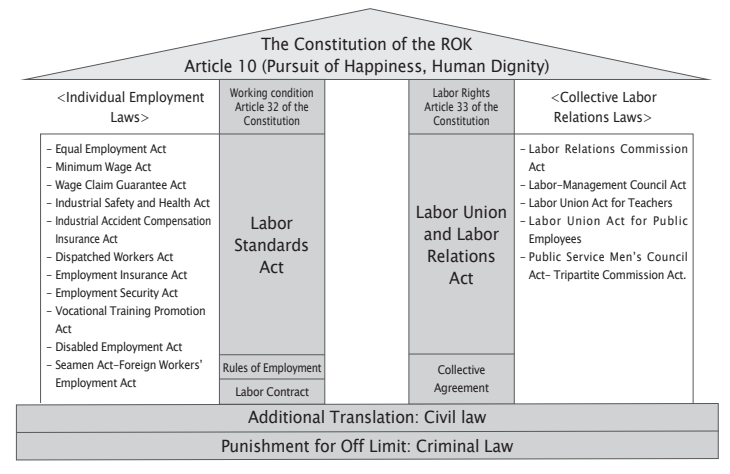Chapter 1 The Structure of Labor Laws in Korea
- Section 1: Understanding Labor Laws - Ⅰ. Basic Structure
-
Understanding labor law is the most basic requirement for efficient human resource management, and it is on their knowledge of labor law that human resource and labor managers implement their tasks. Labor law is constantly being revised, so it is important to stay up-to-date on it. The following figure illustrates a systematic classification of labor law in Korea.







